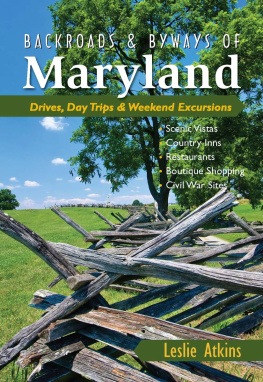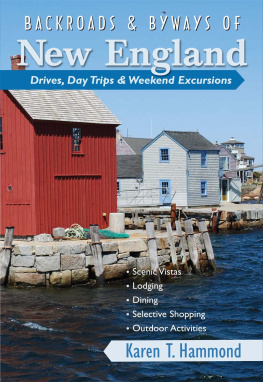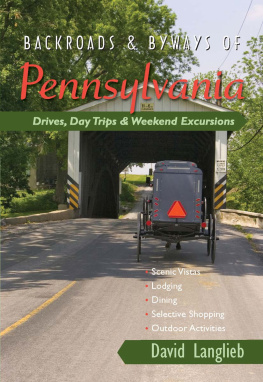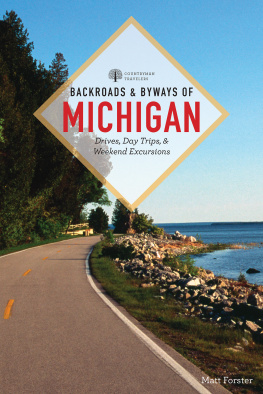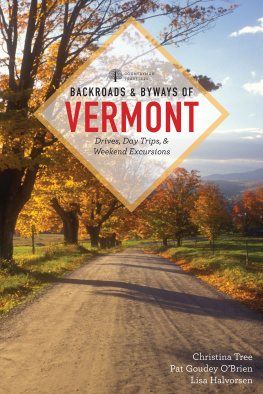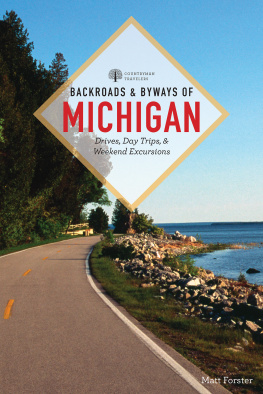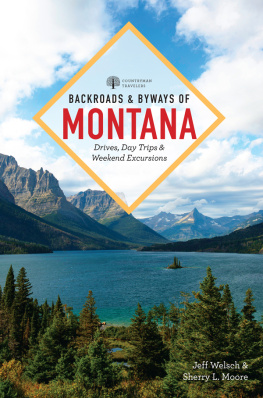

Copyright 2017, 2011 by W. W. Norton & Company
All rights reserved
For information about permission to reproduce selections from this book, write to Permissions, The Countryman Press, 500 Fifth Avenue, New York, NY 10110
For information about special discounts for bulk purchases, please contact W. W. Norton
Special Sales at specialsales@wwnorton.com or 800-233-4830
Cover series design by Steve Attardo
Cover photograph Dancestrokes/Shutterstock
The Library of Congress has cataloged the printed edition as follows:
Names: Sjquist, Christine, author.
Title: Backroads & byways of Utah / Christine Sjquist.
Other titles: Backroads and byways of Utah
Description: 2nd edition. | New York, NY : Countryman Press, a division of W.W. Norton & Company, 2017. | Includes index.
Identifiers: LCCN 2017020358 | ISBN 9781682680827 (pbk.)
Subjects: LCSH: UtahGuidebooks. | Scenic bywaysUtahGuidebooks. | Automobile travelUtahGuidebooks.
Classification: LCC F824.3 .S56 2017 | DDC 917.9204dc23 LC record available at https://lccn.loc.gov/2017020358
The Countryman Press
www.countrymanpress.com
A division of W. W. Norton & Company, Inc.
500 Fifth Avenue, New York, NY 10110
www.wwnorton.com
978-1-68268-082-7 (pbk.)
978-1-68268-083-4 (e-book)
To David: Thanks for all the journeys weve
had, and for all those yet to come.

Contents
U tah boasts vast amounts of open land and extremely varied terrain. It has mountain peaks that stand more than 13,700 feet above sea level, broad valleys, high planes, and many varieties of desert: red rocks, vermillion cliffs, buffed sandstone canyons, rounded arches, lunar landscapes, dramatic gorges, and expansive salt flats. Within a few hours of each other are high fortified alpine highways and wild dirt roads stretching across broad, low-lying desert basins. To drive for an afternoon in this state is to visit more landscapes than you might see driving for days in other parts of the country. To experience all of them is to travel to nearly every continent in the worldexcept, on most days, Antarcticaflora-, fauna-, and geology-wise. And Utah has six national parks and numerous national monuments and state parks to celebrate and preserve these vistas.
Because roughly 75 percent of Utahs population lives along the Wasatch Range , the remainder of the states lands are quite open and untainted by the trappings of civilization. More than three-quarters of Utahs land is publicly owned, making the state third in the country for publicly owned land as a proportion of total arearanking behind only Alaska and Nevada. The general openness of the landscape and straightness of the roads enable relatively speedy long-distance travel. Thus, many of the drives in this book will be in excess of 100 miles. The list of suggested routes will begin with a tour of the Wasatch Canyons near Salt Lake City. The rest are then listed in clockwise order, beginning in the northeastern corner of the state and working around to many remote and gorgeous sections of road. Each route has been chosen to represent the most interesting, beautiful, visually diverse, and historically and culturally relevant sections of road and surrounding points of interest.
Each drive listed in this book has been embellished with interesting historical, geological, scenic, and factual information. Keep your eyes open for advisories that warn about climate-related hazards such as the potential for snow closures or excess heat, as well as other possible dangers such as long stretches of road without services.

ASPENS HIGH ON MT. TIMPANOGOS SHOULDER
Utah is a large statethe thirteenth-largest in the Unionwith only one major urban population, which runs the western Wasatch Front. Nearly everyone traveling to Utah by plane will almost assuredly fly into Salt Lake City via the Salt Lake City International Airport , a major hub just 5 minutes west of downtown. Be prepared: In the western United States, people are accustomed to driving long distances. And since Utah is crisscrossed by several major interstates, and speed limits are relatively high, most people consider a 200- or 300-mile drive totally reasonable for a weekend trip. But do not worry; the overwhelming majority of Utahs freeways now boast a speed limit of 80 miles per hour, making this one of just six states in the country with such a high limit.
Though Salt Lake City is certainly worth visiting, it will not be included in this book. (If you are interested in reading more about this cityor other cities in Utahon your journey, you may want to check out Countrymans Great Destinations: Salt Lake City, Park City, Provo & Utahs High Country Resorts or Utah: An Explorers Guide .) With regard to rural exploration across the state, read the tips and alerts below.
NATIONAL PARKS PASS
Utah has a bounty of national parks and monuments. In fact, it has thirteen in allor seventeen, if you count the four national trailswith yet more abutting its borders. For those planning to spend any serious amount of time in the state, it is almost assuredly worth the money to purchase an annual pass. Formerly known as the Golden Eagle Passnow the America the BeautifulThe National Parks and Federal Recreational Lands Pass it grants unlimited access to all national parks and monuments (as well as some other government-run parks) for a year from the date of purchase for $80. Compared with the cost of one-week passes to individual parks (usually around $20 apiece), this could very well be worth the moneyespecially for those planning to visit other under-the-radar types of federally operated destinations such as American Fork Canyon near Lehi ().

MOUTH OF KOLOB CANYON
Utah History
T he last major ice age, the Wisconsin glaciation, lasted from about 70,000 BC to 10,000 BC. During that time, the world was a much cooler, wetter place. The Great Basin, a massive bowl centered on but bigger than Nevada, had no outlet to the ocean; during this wet time, it became a huge holding area for water. Several times, a massive lake in northern Utah (more than a quarter the size of the state) filled, drained, and refilled. Its last major stint ended about 12,000 years ago, when a weakness along its shores gave way, releasing Lake Bonneville in a catastrophic flood across southern Idaho. Prior to the natural dam breaking, the lakes waters would have been up to 800 feet over present-day Salt Lake City.
It wasnt until after the ice started to recede that Utah became inhabited by humans. In fact, right around 11,000 years ago, the first groups of people started leaving evidence of their existence. This evidence has been found across the state, with the oldest being in Danger Cave (see ), in the Bonneville desert. Utahs most ancient residents lived a transient lifestyle, apparently spending all waking hours just trying to stay alive. The first permanent peoples in Utah to live in larger groups and leave major traces were the Anasazi and Fremont. Partially nomadic, these people also planted basic crops and even raised animals for consumption. This relatively stationary lifestyle allowed for the manifestation of more advanced culture, such as tool- and basketmaking. These were the ancestors of the Ute , Paiute , Shoshone , Bannock , and Gosiute tribes.
Next page


